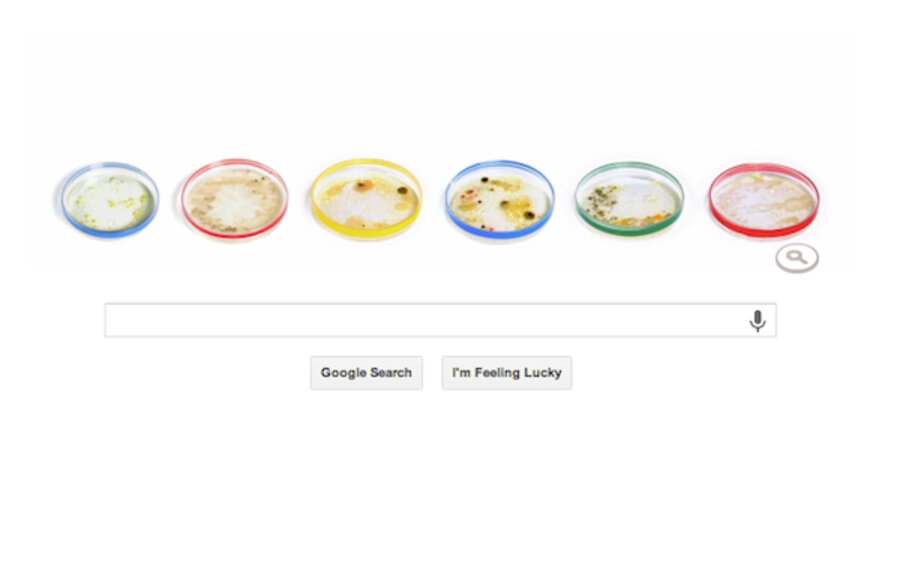How Julius Richard Petri revealed just how gross the world really is
Loading...
The Google homepage today depicts six Petri dishes colored in the familiar blue, red, green, and yellow hues of the Google logo. Click on the small play button in the center of the doodle, and a gloved hand will swab down the dishes. A few seconds later, the bacteria begins to grow – lumpy, clotted, yellowy, viscous bulbs of bacteria. Appetizing, it isn't.
In fact, on the scale of palatable Google doodles, we'd rank this far behind the mouth-watering Julia Child illustration (created on the occasion of what would have been the famous chef's 100th birthday); the chocolatey cake doodle of 2012 (created on the occasion of Google's 14th birthday); and any number of the recent Thanksgiving doodles (this one still occupies a special place in our hearts).
Then again, the latest Google doodle isn't meant to make us hungry. It's meant to honor the memory of bacteriologist Julius Richard Petri, who would have turned 161-years-old today. So who was Mr. Petri, exactly? Well, he was a pioneering scientist, for one – and also the guy who gifted the world with the only thing you probably still remember from biology class.
Petri was born in Barmen, in what is now western Germany, in 1852. He studied medicine at the Kaiser Wilhelm Akademie, in Berlin, and later did a kind of residency at the Berlin Charité hospital. For a time, he was also apprenticed to Robert Koch, one of the founders of modern bacteriology, and it was under Koch that Petri made his most lasting mark on the world of science.
Koch had already developed a way to grow bacteria on gelatin and then agar plates – vital for a scientist who wished to understand how micro-organisms formed and multiplied. But as Scott LaFae, a reporter for the San Diego Union-Tribune, noted in a story on Petri back in 2007, "there was the issue of contamination. Nothing stayed sterile, pure."
Petri's innovation was a circular, shallow dish, with its lid that snapped shut over the sample, thus ensuring the material inside remained undefiled.
"The discovery was the lid,” Moselio Schaecter, a microbiologist UCSD and San Diego State University told Mr. LaFae. "The way [many earlier scientists] had worked was with plates stacked with glass rods separating them, the whole thing put under a glass bell. It was about as awkward as could be. You couldn't keep anything from becoming contaminated."
Petri had a relatively distinguished career after the invention of the Petri dish – he was a respected army surgeon and he headed up the Museum of Hygiene, in Berlin. But it was for his dish that he remains most famous for today: that simple device that continues to perform a vital duty in thousands of laboratories around the globe.
For more tech news, follow us on Twitter @venturenaut.
[Editor's note: The original version of this article misstated how old Petri would be if he were alive today. He would be 161.]






